If you’re a regular at Women’s Tennis Blog, you must know about Jimmie48, our main photographer for about two years now, traveling the globe to bring us the atmosphere from WTA tournaments all the way from Hobart and Brisbane, Hong Kong and Dubai, Paris and Madrid, to Stanford and Toronto. Now he’s in Tokyo, where he covered the Japan Women’s Open Tennis and is now photographing the ladies at the Toray Pan Pacific Open, since the city is hosting back-to-back WTA tournaments in the same venue this year.
While we are very familiar with the final product, the photo galleries, we have no idea what it takes to make a good tennis photo and in general what it feels like being a pro tennis photographer. Being super interested in what the job entails, I decided to interview my photographer and I actually turned out to have so many questions that I had to divide the interview into three parts –Tournaments, Players and General. I hope you’ll enjoy this Part 1 about tournaments and that you will look forward to reading the other two parts, which will go live on the next two Mondays.
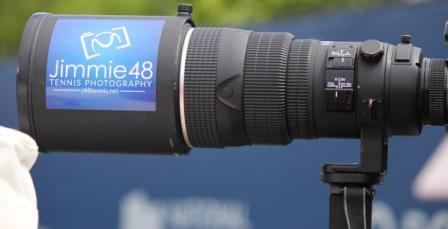
What does your typical day at a tournament look like?
I usually arrive an hour before the first match, unpack and put together all my gear (which does take ages!), get setup in the media center and plan my day based on the Order of Play, prioritizing the matches I plan on shooting.
From then on out it’s shooting matches, usually 2-3 in a row, before I head back to the computer to file the photos, unless I capture something so important/spectacular that it has to go out right away, in which case I rush back in-between matches.
The selection of matches I shoot is based on several factors, including the importance of the involved players, professional commitments to certain players and sometimes personal interest. I usually group matches into three categories, from “must-do” matches to those I only shoot if there’s some spare time or if I happen to be nearby.
Basically, I try to cram as many matches as possible into each day, trying to keep up with the editing and uploading and if everything goes well, I’m all done with my day’s work once the last match has commenced. It usually doesn’t though, time is always in short supply and at some point during the day I’m starting to fall behind, so I’m usually doing at least an hour of photo editing & uploading work after the action is over.
The length of my days depend on the tournament size, Internationals often are a breeze, but Premier Mandatory tournaments with 64-player draws usually result in 12-16hr work days during the early rounds.
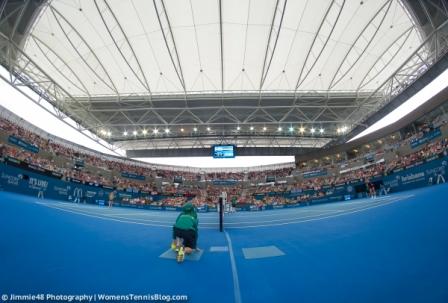
Which WTA tournament has the best setting for photography (light, background color, and other conditions)?
My two favorites are Brisbane & Madrid.
Brisbane’s Pat Rafter Arena is amazing to work in, the photo pit is lower than the court surface, allowing for very low angles which always results in spectacular shots. It’s also one of the few arenas that has photo pits on both sides of the courts, so photographers can switch back and forth without being confined in one spot. You can also comfortably shoot from the upper concourse level without obstructing the spectators view, there’s literally no drawbacks in this place.
Madrid is just the best in terms of light. The afternoon sunlight is spectacular and due to the unique architecture of the Caja Magica, you often get half the courts covered in sunlight while the other side is in the shadows. That makes for some spectacular photos, especially combined with the colorful red clay.
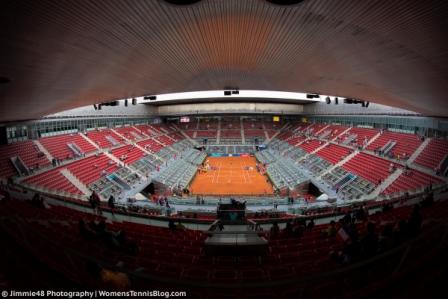
Which WTA tournament has the best facilities and organization to enable smooth work of photographers?
I have to go with Stuttgart on that one. It sounds like a terrible cliche, but the tournament really is very German in the best possible way. The organization is beyond top notch, everything’s incredibly well-planned and thought out and the facilities leave nothing to be desired.
The tournament also has one of the most comfortable media centers, overlooking the whole arena, so you can easily catch a quick view of the action while working, much more pleasant than sitting in a windowless room somewhere, as it’s often the case. Stuttgart also pampers people with incredibly good food and nothing makes stressed journalists happier than something proper to eat! Unfortunately, it is indoors, so it’s not among my top picks for shooting conditions, but everything else is just perfect.
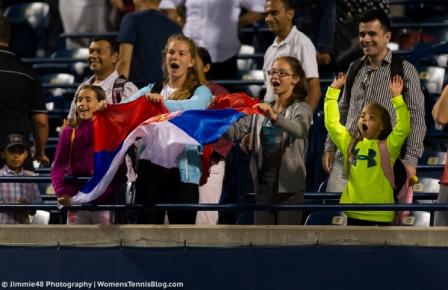
How important is the overall atmosphere and fan engagement for good photos from matches?
Very much. Empty stands make for depressing photo backdrops so the more fans and the more intense the atmosphere, the more likely it is to get striking shots. Fans always provide interesting photo opportunities too, cheering, holding up signs, etc. Those are all great photo opportunities. You can also feel the players getting more pumped up and involved if the crowd is into it, the intensity of a match simply reaches a different level that’s much harder to experience in an empty stadium.
Also, sometimes the surroundings of a match can tell the story of it better than a photo of the players could. Fans looking disappointed, coaches that are face-palming, these kind of photos can instantly tell the viewer all they need to know.
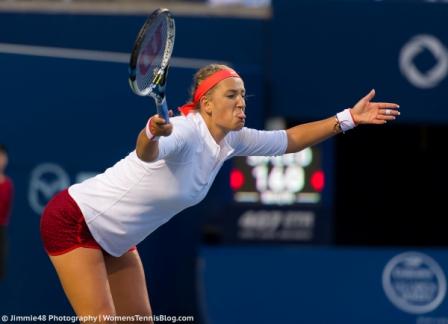
What do you enjoy most about being a tennis photographer?
Most of all I like that it’s a people business. You get to follow and capture players during their highest highs and their lowest lows, you get to witness them celebrating victories or suffering defeat. I couldn’t imagine taking architectural photos or landscapes, that wouldn’t excite me because it lacks this personal component.
I also enjoy following players’ journey in the sport over the years. It’s always fun to see a player that I’ve been shooting since junior level graduate to the pro-tours or see a formally lower-ranked player suddenly make it big.
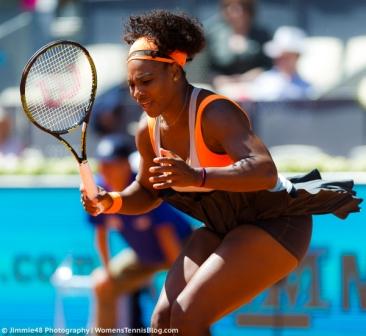
Do photographers cooperate among themselves at tournaments and how does that look overall?
No, that’s usually not the case. Very large agencies like Getty Images or large local media outlets may send two or more photographers to a tournament to work together, but other than that, everybody fights for themselves. With that being said, there’s plenty of professional courtesy as everyone usually makes an effort to not be into each other’s way so everyone can get their work done.
Granted, you once in a while have somebody who behaves like he owns the place, but that’s an exception. Most photographers are easy to work alongside and the atmosphere is usually easy-going, even though people are more or less competing with each other.
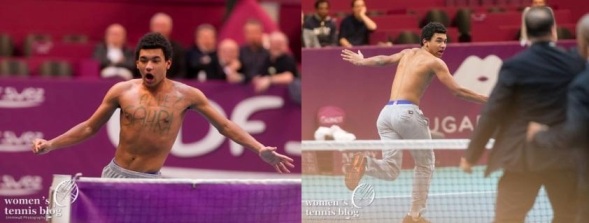
Can you mention any unexpected situations, incidences that contributed to unique photos?
Perhaps the most unusual situation I ever captured was a streaker that ran onto the court at the 2014 Open GDF Suez in Paris. The guy apparently was a crazy Sara Errani fan who, while wearing a painted message to her on his chest, jumped onto the court, chased by security guys, jumped back into the stands and disappeared.
Stay tuned for Part 2 of this interview, which will be focused on questions about WTA players, and Part 3, with more general questions.


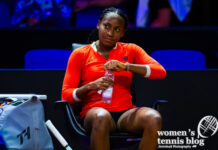
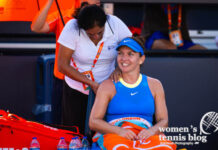
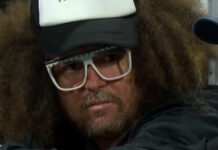

Great blog, Marija. I look forward to the other 2 parts with great anticipation. My brother was a photographer for high school and college American football and he could relate to Jimmie 48’s descriptions. Will try to steer him to read your blogs as they are always well done.
I am a fine arts photographer, but photographing tennis would be a dream job for me. How does one find there way into such a position ? Thanks for sharing this interview .
Thanks for the kind responses!
Susan, the easiest way to start out is by starting to shoot your local tournaments, things like ITF, club events and stuff like that.
You can get easy access at these types of events and start to work your way up to bigger things as you build a portfolio. Try it, it’s fun and the players at these types of events usually appreciated someone taking photos of them, as nobody else usually bothers 🙂
Jim, thanks for sharing the story with your brother. Jimmie48 finds the interview mundane, but that’s because he’s apparently modest and because for him those are everyday situations, while we find his perspective really interesting. I’m so glad this idea for the interview crossed my mind.
Susan, I’m glad you enjoyed it. Believe me, parts 2 and 3 will be equally good reads.
Jimmie48, thanks for stopping by to respond to comments!
Thank you